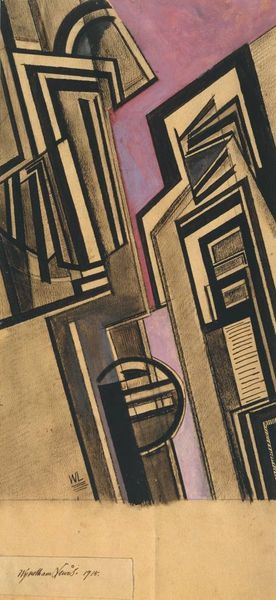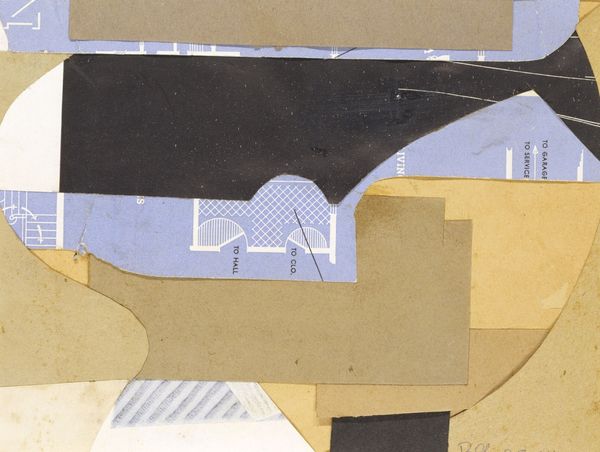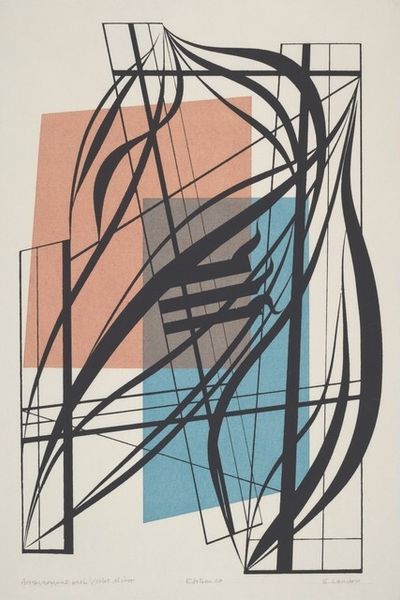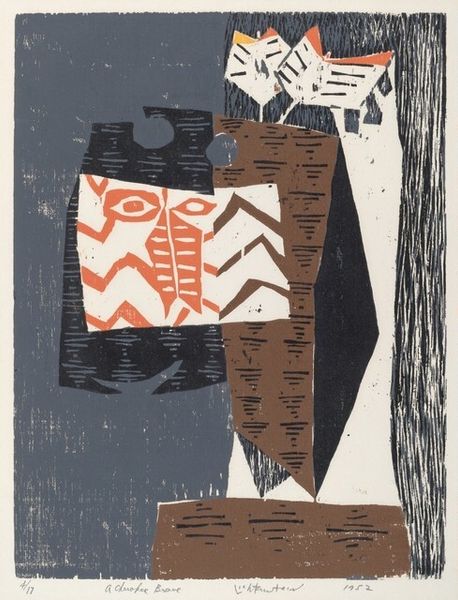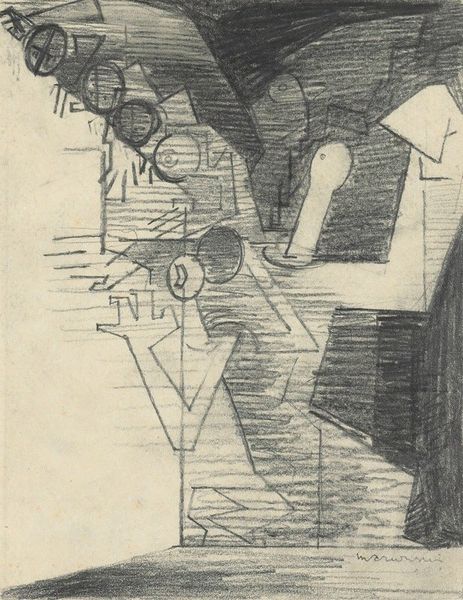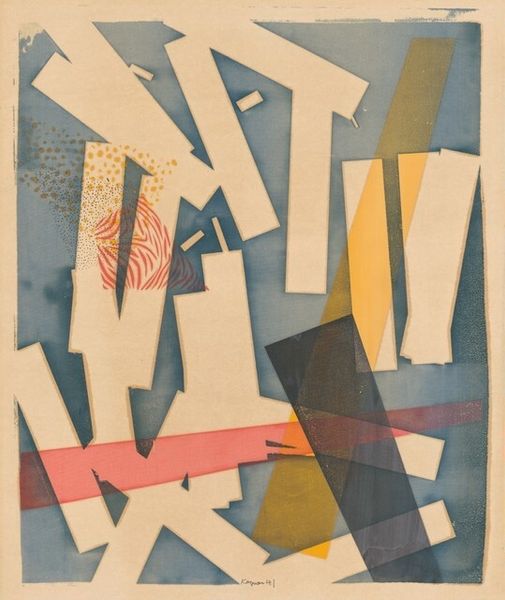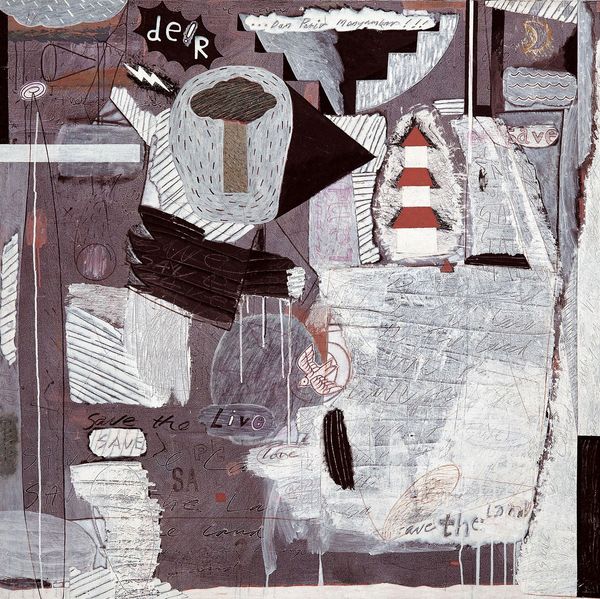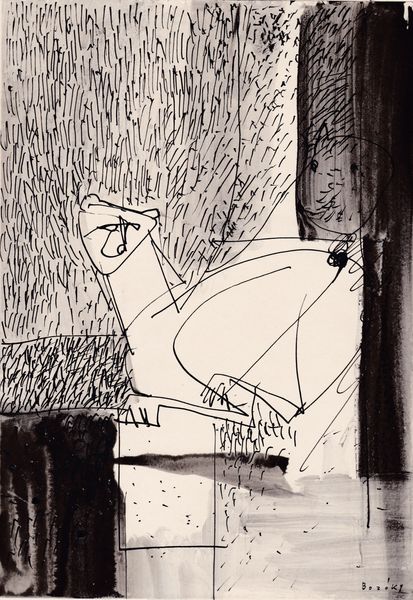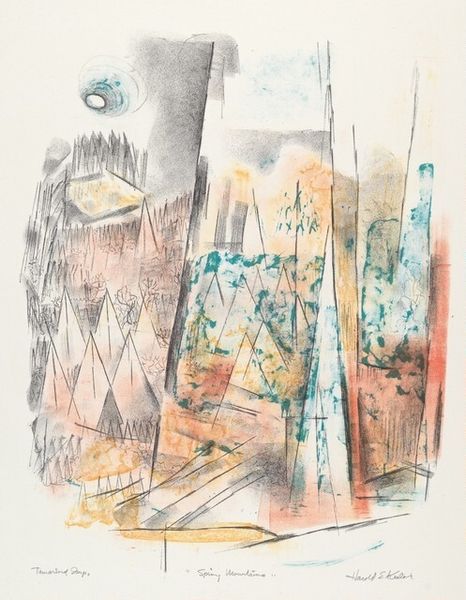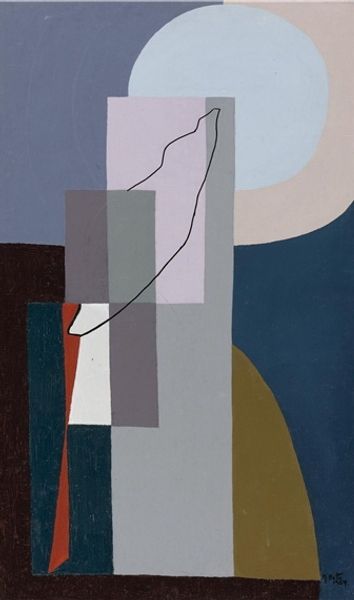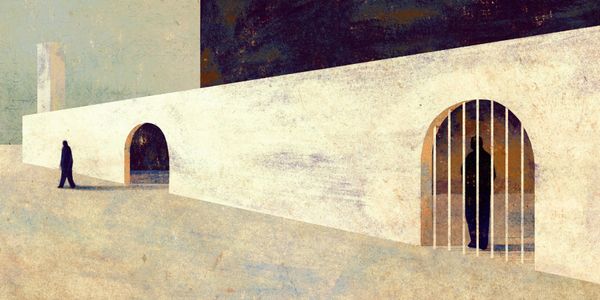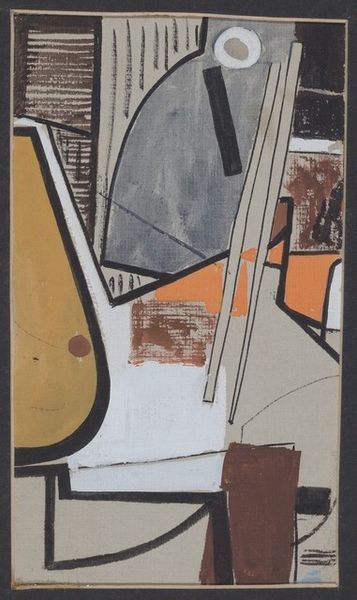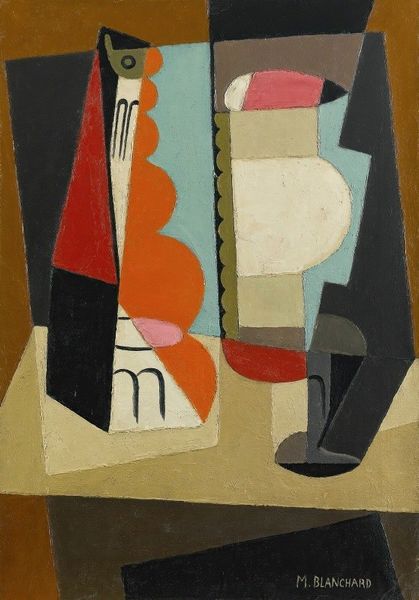
screenprint, print
#
screenprint
# print
#
geometric
#
abstraction
#
cityscape
Dimensions: Image: 415 x 265 mm Sheet: 535 x 381 mm
Copyright: National Gallery of Art: CC0 1.0
Editor: Here we have Philip Burnham Hicken's "Underpass," a screenprint from 1948. I find its abstracted cityscape strangely melancholic, despite the bold geometric shapes. How do you interpret this work? Curator: Well, considering the post-war period, this piece reflects the urban landscape's transition, doesn't it? Notice the clean lines and simplified forms; Hicken seems to be presenting a modern vision. Does the seemingly solitary figure with the umbrella contribute to your sense of melancholy? Editor: Absolutely. They seem isolated amidst the geometric structures. It's interesting that you point out the "modern vision," though, since there's this undeniable feeling of…emptiness? Curator: Exactly. Post-war urban planning often prioritized functionality over human connection, and the artwork is possibly a reflection of social anxieties relating to modernity. How do you think screenprinting, as a medium, affects the reading of the image? Editor: I hadn't really thought about it that way, but it lends the piece a kind of stark, graphic quality that seems to amplify the isolation and alienation within the image. Curator: It is thought-provoking. It prompts questions about how we shape our environments and how, in turn, those environments shape us. Do you agree that Hicken's choice of muted colors and hard edges adds to this dialogue? Editor: Yes, absolutely. Thinking about it now, it's almost as if the printmaking itself is part of this larger post-war theme you mention. Curator: Exactly, the rise of new media enabled more people to create works that made social commentaries more accessible. Editor: That is really interesting! Thanks so much, I will definitely have that in mind when approaching prints going forward.
Comments
No comments
Be the first to comment and join the conversation on the ultimate creative platform.
